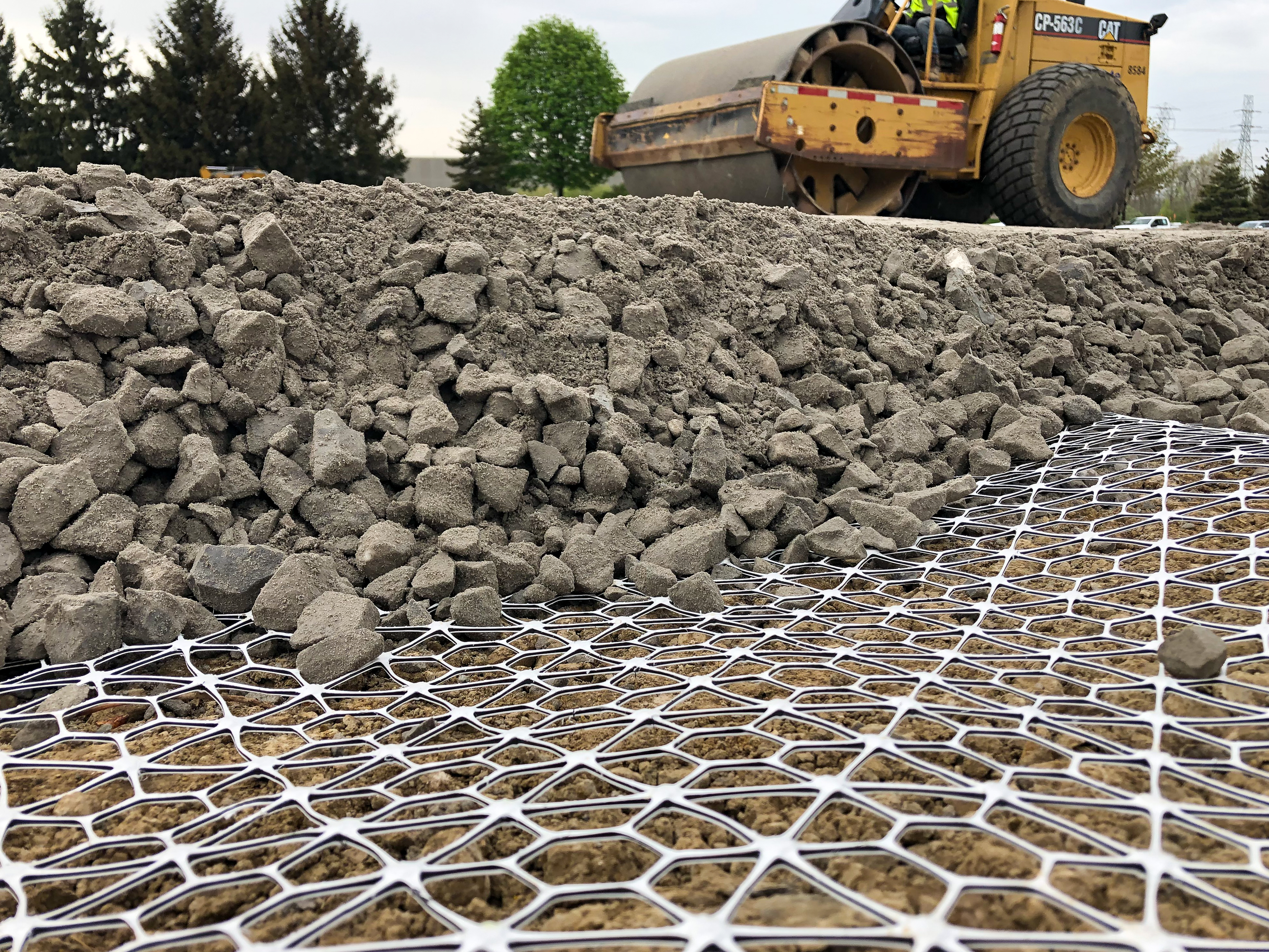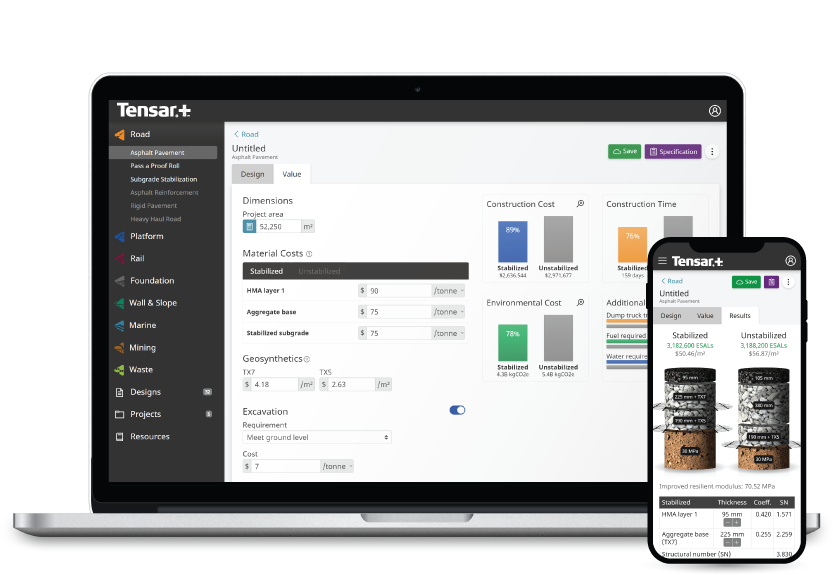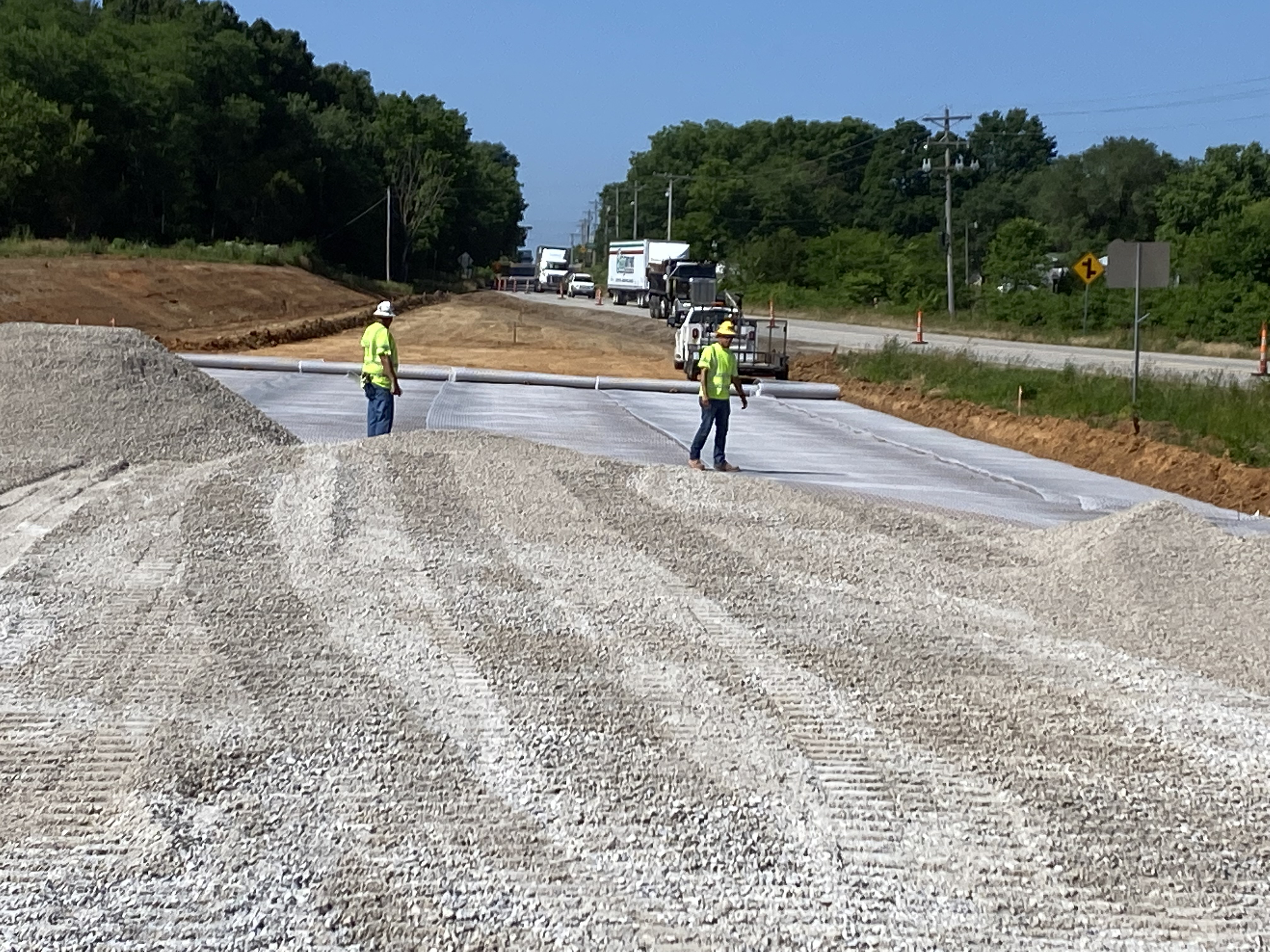A Soft Soil Challenge: Pass a Proof Roll the First Time, Every Time
by Joe Heintz, P.E., on February 07, 2025
As a civil engineer, a common challenge often encountered during the wet, rainy season is soft or unstable soil conditions on a project site. Those problematic soft spots can quickly derail progress, especially when you are struggling to pass a proof roll to ensure the subgrade is stable enough for construction or meet the specified passing criteria.
 The Problem: Soft, Variable Soil and Proof Roll Failures
The Problem: Soft, Variable Soil and Proof Roll Failures
Wet, soft or weak soil layers can make it difficult to achieve the necessary compaction and load-bearing capacity for a solid foundation. This not only affects the ability to pass a proof roll but also jeopardizes the long-term stability of the structure you're building. If the soil is too soft, the proof roll will fail, and your client’s project stalls while you make adjustments to your design or ground improvement strategy.
Another challenge with passing a proof roll is variable subgrade conditions. Different soil types, particularly silts and organics could make it difficult to pass a proof roll, and elastic rebound may be observed. In cold and wet weather, waiting for these soil types to dry or for the pore water to dissipate, may not be possible given the construction schedule.
Many engineers may rely on chemical stabilization like lime or cement, however these options aren’t ideal during the rainy, cold season since they have specific moisture and temperature requirements and lengthy curing times. Or they may opt for the traditional solution to over-excavate the bad soil, and add in additional good aggregate. But this isn’t always feasible, especially when there’s a tight project deadline and budget constraints. So, what's the solution?
The Solution: Tensar InterAx Geogrid and Tensar+ Software
Tensar InterAx geogrid provides a highly effective, proven solution for stabilizing soft soil and improving its load-bearing capacity. Engineers can also tap into the Proof Roll design module within Tensar+ software to quickly design the section. Here’s how it works:
 1: It starts with InterAx Geogrid
1: It starts with InterAx Geogrid
InterAx geogrid is the highest performing geogrid on the market that improves soil stability through mechanical interlock. InterAx geogrid has openings, or apertures, that allow granular materials to strike through the geogrid and form the interlock. This interlock confines the granular particles to keep them from spreading laterally and minimizes the movement of the material. When placed over the soft soil layer, the geogrid distributes the applied loads and increases bearing capacity, allowing for successful proof roll performance, all without the need for extensive soil removal or chemical soil treatment.
The addition of InterAx geogrid to your design not only stabilizes the soil but also helps reduce the amount of fill material required. The result is a faster, more cost-effective solution that allows your client to quickly pass the proof roll and move forward with the project.
 2. Designing the Solution with Tensar+ Software
2. Designing the Solution with Tensar+ Software
The key to effectively integrating Tensar InterAx geogrid is understanding how to properly design the subgrade section. This is where Tensar+ design software comes in. This free, easy-to-use tool simplifies the process of designing stabilized soil sections, allowing you to determine the optimal geogrid type, placement, and quantity of aggregate required for your project. Engineers can even compare a geogrid design to other stabilization methods to ensure they are getting the most optimized option for performance and budget.
Tensar+ also allows the designer to account for different subgrade types, which all behave differently when trying to pass a proof roll. You can also consider elastic rebound, or waterbed effect, in the design, to calculate the design thickness required to pass a proof roll with these especially challenging conditions.
Using Tensar+, designers can also predict the enhanced resilient module that will be achieved at the top of the InterAx stabilized layer, once proof roll has passed. This can be input directly into a pavement design, so the stiffening benefits of InterAx can be considered to further reduce the pavement section thickness.
Tensar has over 50 years of partnering with engineers, contractors and owners, getting proof rolls to pass, and many of the best practices identified, have been summarized in the Tensar+ module.
Benefits of Using Tensar InterAx Geogrid and Tensar+ Software:
Real-World Performance: InterAx solution saves millions on Eastbound I-44 project Location: Rolla, MO
Client Challenge: Soon after the reconstruction of approximately 8 miles of existing roadway began, MoDOT recognized that the exposed subgrade was extremely unstable to run heavy trucks. The initial plans included 18 inches of rock fill. Since this is a heavily traveled highway, MoDOT was on a tight schedule and didn’t want to increase aggregate base thickness.

Tensar Solution: MoDOT and Tensar representatives met on-site the next day to perform DCP testing on the exposed subgrade, affirming a new design subgrade CBR of 0.9% The Proof Roll module in Tensar+ design software allowed the team to quickly determine the type of geogrid that was required with the planned 18 inches of aggregate. Since the critical mainline lanes receive most of the traffic, more strict performance criteria were used than along the shoulders.
The InterAx geogrid solution saved approximately $3M (~$15/SY) over conventional undercut and replace, allowing construction to continue without additional delay.
Get started now by visiting our website to learn more about Tensar+ software or schedule a lunch n’ learn demo.

 The Problem: Soft, Variable Soil and Proof Roll Failures
The Problem: Soft, Variable Soil and Proof Roll FailuresWet, soft or weak soil layers can make it difficult to achieve the necessary compaction and load-bearing capacity for a solid foundation. This not only affects the ability to pass a proof roll but also jeopardizes the long-term stability of the structure you're building. If the soil is too soft, the proof roll will fail, and your client’s project stalls while you make adjustments to your design or ground improvement strategy.
Another challenge with passing a proof roll is variable subgrade conditions. Different soil types, particularly silts and organics could make it difficult to pass a proof roll, and elastic rebound may be observed. In cold and wet weather, waiting for these soil types to dry or for the pore water to dissipate, may not be possible given the construction schedule.
Many engineers may rely on chemical stabilization like lime or cement, however these options aren’t ideal during the rainy, cold season since they have specific moisture and temperature requirements and lengthy curing times. Or they may opt for the traditional solution to over-excavate the bad soil, and add in additional good aggregate. But this isn’t always feasible, especially when there’s a tight project deadline and budget constraints. So, what's the solution?
The Solution: Tensar InterAx Geogrid and Tensar+ Software
Tensar InterAx geogrid provides a highly effective, proven solution for stabilizing soft soil and improving its load-bearing capacity. Engineers can also tap into the Proof Roll design module within Tensar+ software to quickly design the section. Here’s how it works:
 1: It starts with InterAx Geogrid
1: It starts with InterAx GeogridInterAx geogrid is the highest performing geogrid on the market that improves soil stability through mechanical interlock. InterAx geogrid has openings, or apertures, that allow granular materials to strike through the geogrid and form the interlock. This interlock confines the granular particles to keep them from spreading laterally and minimizes the movement of the material. When placed over the soft soil layer, the geogrid distributes the applied loads and increases bearing capacity, allowing for successful proof roll performance, all without the need for extensive soil removal or chemical soil treatment.
The addition of InterAx geogrid to your design not only stabilizes the soil but also helps reduce the amount of fill material required. The result is a faster, more cost-effective solution that allows your client to quickly pass the proof roll and move forward with the project.
 2. Designing the Solution with Tensar+ Software
2. Designing the Solution with Tensar+ SoftwareThe key to effectively integrating Tensar InterAx geogrid is understanding how to properly design the subgrade section. This is where Tensar+ design software comes in. This free, easy-to-use tool simplifies the process of designing stabilized soil sections, allowing you to determine the optimal geogrid type, placement, and quantity of aggregate required for your project. Engineers can even compare a geogrid design to other stabilization methods to ensure they are getting the most optimized option for performance and budget.
Tensar+ also allows the designer to account for different subgrade types, which all behave differently when trying to pass a proof roll. You can also consider elastic rebound, or waterbed effect, in the design, to calculate the design thickness required to pass a proof roll with these especially challenging conditions.
Using Tensar+, designers can also predict the enhanced resilient module that will be achieved at the top of the InterAx stabilized layer, once proof roll has passed. This can be input directly into a pavement design, so the stiffening benefits of InterAx can be considered to further reduce the pavement section thickness.
Tensar has over 50 years of partnering with engineers, contractors and owners, getting proof rolls to pass, and many of the best practices identified, have been summarized in the Tensar+ module.
Benefits of Using Tensar InterAx Geogrid and Tensar+ Software:
- Proven Proof Roll Performance: Tensar+ is backed by decades of full-scale research and validated by third-party experts so you can trust that your design recommendation will be the best solution for the project.
- Faster Solutions: The Tensar+ app can be accessed on the job site so that you can calculate design options on the go and get the project back on track quickly.
- Cost Savings: By reducing the need for additional fill material, excavation, and labor-intensive stabilization techniques, your clients can save on project costs while achieving a dependable solution.
- Customized Design: Tensar+ software allows you to adjust your design parameters based on real-time project needs and required conditions, ensuring that you always have the most effective solution at hand. This includes varying the surface rut, the proof roll vehicle, and subgrade soil type, to accommodate the specifics of your project.
Real-World Performance: InterAx solution saves millions on Eastbound I-44 project Location: Rolla, MO
Client Challenge: Soon after the reconstruction of approximately 8 miles of existing roadway began, MoDOT recognized that the exposed subgrade was extremely unstable to run heavy trucks. The initial plans included 18 inches of rock fill. Since this is a heavily traveled highway, MoDOT was on a tight schedule and didn’t want to increase aggregate base thickness.

Tensar Solution: MoDOT and Tensar representatives met on-site the next day to perform DCP testing on the exposed subgrade, affirming a new design subgrade CBR of 0.9% The Proof Roll module in Tensar+ design software allowed the team to quickly determine the type of geogrid that was required with the planned 18 inches of aggregate. Since the critical mainline lanes receive most of the traffic, more strict performance criteria were used than along the shoulders.
The InterAx geogrid solution saved approximately $3M (~$15/SY) over conventional undercut and replace, allowing construction to continue without additional delay.
Conclusion
During this wet weather season, Tensar InterAx geogrid and Tensar+ design software offers the ideal approach for quickly and reliably passing a proof roll. It’s the smart, fast, and efficient way to overcome subgrade challenges and keep projects on schedule.Get started now by visiting our website to learn more about Tensar+ software or schedule a lunch n’ learn demo.





